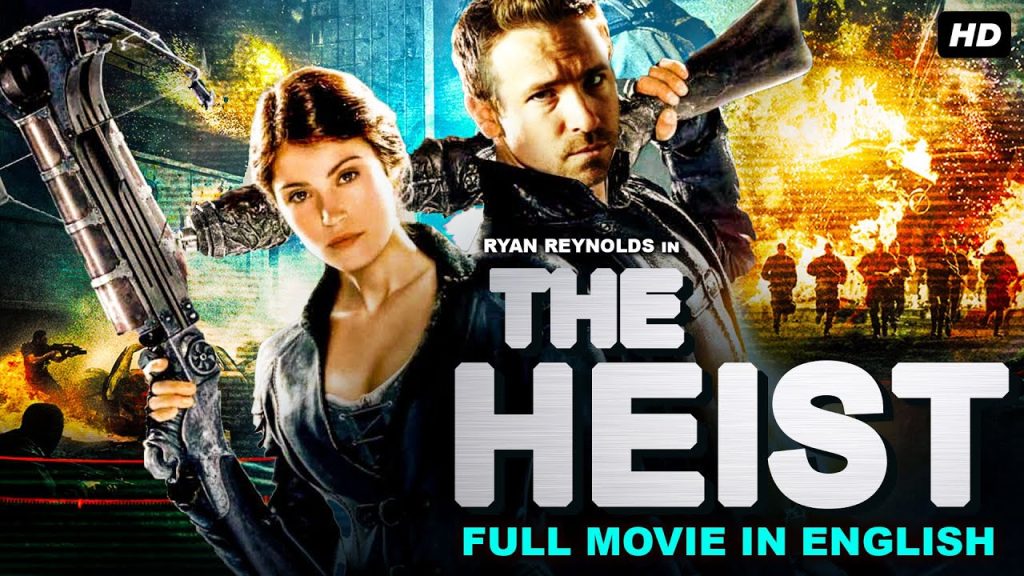Introduction: The Geometry of Deception
David Mamet’s The Heist isn’t just a crime thriller—it’s a clockwork mechanism of deceit, power, and performance. Released in 2001 and starring Gene Hackman, Danny DeVito, Delroy Lindo, and Rebecca Pidgeon, the film might seem like a familiar genre exercise. But peel away the surface, and you find a layered meditation on loyalty, identity, and the lethal elegance of manipulation.
Unlike contemporary heist blockbusters that prioritize explosions and globe-trotting glamour, The Heist tightens its narrative to a razor’s edge. Every line of dialogue cuts. Every look conceals. Every action implies a deeper strategy.
This is a film built not on spectacle but on strategy—and like its protagonist, it hides its brilliance beneath understated craftsmanship.
Plot Summary: The Illusion Engine
The story revolves around Joe Moore (Gene Hackman), a veteran thief with a disciplined crew and a well-rehearsed lifestyle. After a botched robbery where Joe’s face is caught on surveillance footage, he plans to retire. But his financier, the volatile and greedy Mickey Bergman (Danny DeVito), forces Joe into one last job—a Swiss gold heist.
Mickey adds a wild card to Joe’s trusted crew: his young and arrogant nephew, Jimmy Silk (Sam Rockwell). As tensions build, so do the betrayals. The plot spirals through a series of double- and triple-crosses, culminating in a climax where only the most careful con survives.
Joe Moore: The Last Professional
Joe Moore is more than a thief—he’s a craftsman. A man of systems. A tactician whose weapon isn’t brute force, but patience. His mantra—“I try to imagine a man smarter than myself”—isn’t just humility; it’s a philosophy.
Joe is an old-school archetype: loyal to his team, bound to rules, and committed to control. Unlike the flashy criminals of modern cinema, Joe avoids attention. He understands the heist not as chaos but as precision geometry. Timing. Trust. Contingency.
And yet, he is constantly surrounded by chaos—Mickey’s emotional greed, Jimmy’s impulsive ambition, Fran’s shifting loyalties. Joe’s calm is what makes him dangerous. He anticipates betrayal before it manifests. He doesn’t fight to dominate—he fights to end the game before the other players know they’ve lost.
He is, in every way, the chess master at a table of poker players.
Thematic Threads:
1. The Performance of Truth
In The Heist, no one tells the truth. Not once. Every character performs roles, trades facades, and weaponizes words. Dialogue is riddled with misdirection—a Mamet trademark—where characters often speak in layered, coded banter.
The film becomes a meta-commentary on acting itself. Who’s pretending? Who’s honest? And when everyone is lying, what becomes of truth?
Even Joe, the supposed anchor of morality, is constantly hiding information—not out of malice, but survival. The heist isn’t just stealing gold—it’s stealing reality, replacing the real with the staged.
2. Power vs. Control
Mickey believes power comes from money and threats. He tries to bully Joe into submission, using leverage, violence, and ego. Jimmy believes power comes from youth, charm, and daring. Both believe Joe is weak because he’s old, tired, and quiet.
But Joe represents control, not power. He doesn’t shout. He calculates. He lets others underestimate him. That is his weapon. He doesn’t seek to dominate—he simply ensures the board is always tilted in his favor.
The film contrasts impulsive power with practiced control. Joe’s triumph isn’t about strength—it’s about strategy through stillness.
3. Loyalty as Leverage
Joe’s crew—Bobby (Delroy Lindo), Pinky (Ricky Jay), and Fran (Rebecca Pidgeon)—are portrayed as extensions of Joe’s methodical mind. Each member has a role, and loyalty is assumed.
But The Heist argues that loyalty is conditional. It’s a currency. Even within Joe’s circle, trust is fragile. Fran, Joe’s wife, becomes the story’s most volatile variable. Is she loyal to Joe? To Mickey? To herself?
Her actions pivot the film toward chaos. Her flirtation with Jimmy, her betrayal of Joe, and her ultimate choice highlight the film’s central tension: can anyone be truly trusted in a world designed around betrayal?
Character Study: Fran and the Femme Fatale Archetype
Fran is written with cool elegance and an undercurrent of danger. She is not a caricature of the femme fatale—she’s a more grounded, ambiguous evolution of that trope.
She doesn’t seduce to control; she adapts to maintain relevance in a male-dominated con world. She plays all sides—loving wife, dangerous partner, opportunist. Her betrayal of Joe feels inevitable, not because she’s evil, but because in this world, survival outweighs loyalty.
Yet Joe never truly loses control of Fran. He anticipates her betrayal before it happens. Her role becomes less about love and more about a test of Joe’s emotional detachment. Can he let go? Can he outplay even her?
He does. Not through violence. But by planning for her betrayal in advance. Joe doesn’t react. He designs.
Pacing and Direction: Minimalism as Tension
Mamet directs with restraint. The film doesn’t rush to action. Its tension comes from dialogue, from the pauses between words, from silences stretched like tripwires.
Gunfights are rare. Explosions are absent. The most violent moments are verbal.
This deliberate pacing mirrors Joe’s psychology. The film’s rhythm slows your heartbeat instead of raising it. You lean in, not out. You anticipate. And when the twist lands, it doesn’t crash—it clicks.
Climactic Deconstruction: The Final Play
The climax of The Heist is Mametian chess at its finest. Joe fakes the gold. Fakes the truck. Fakes the location. Even his conversation with Jimmy is performance.
Each move was calculated before the game even started.
What seems like reaction is actually execution of a deeper plan. Joe anticipated being betrayed. Anticipated Mickey’s surveillance. Anticipated Fran’s defection. He lets them believe they won—until the final curtain.
The closing scene, with Joe escaping quietly, gold in hand, is not celebratory. It’s silent. Cold. Victorious—but heavy. Joe has lost everything personal, yet secured his professional perfection. It’s a triumph built on isolation.
Symbolism and Subtext
1. Gold as False Security
The gold isn’t just treasure—it’s illusion. Everyone wants it. Everyone chases it. But the film implies that the gold is secondary to the con itself. Joe doesn’t care about wealth. He cares about finishing clean.
The gold becomes a symbol of misplaced focus. Mickey dies for it. Jimmy ruins himself chasing it. Only Joe sees it as a prop in a larger theater.
2. Doors and Windows
Throughout the film, characters move through doors, hide behind glass, peer from shadows. This visual motif reflects the constant shifting of roles and perspective. Who’s on the inside? Who’s on the outside?
In a world of heists, every doorway is a choice—entry or escape. Every room contains a secret. Every exit is both a salvation and a betrayal.
Legacy and Interpretation
The Heist doesn’t ask you to feel—it asks you to think. It’s intellectual cinema disguised as genre storytelling. Mamet builds a puzzle not for spectacle, but for satisfaction. The real heist is psychological. Emotional.
Joe doesn’t just steal gold. He steals the outcome.
In the end, he doesn’t ride off into the sunset. He walks away—alone, controlled, untouched. There’s no glory. Just closure.
Conclusion: The Last Quiet Genius
In an era of loud, effects-driven heist films, Mamet’s The Heist stands apart. It is subtle, surgical, and unforgivingly smart. Every character is a mask. Every plan is a bluff. Every moment is a test of foresight.
Joe Moore is not just a master thief—he is a poet of planning. His world is brutal, but his craft is beautiful.
The Heist reminds us that the greatest criminals are not those with guns, but those with minds so sharp they never have to draw them.
It is, ultimately, a film about clarity in chaos—about how the one who imagines the smartest man… becomes him.

